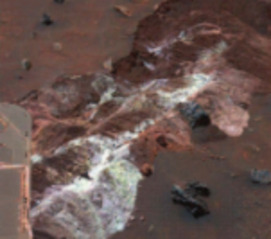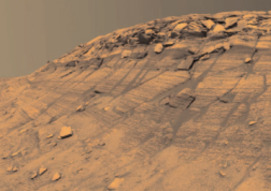Sulfur on Mars
The sulfur cycle is arguably the most important geochemical cycle on Mars because the transfer of sulfur places limits on Mars’s differentiation processes, sedimentary, geomorphic and aqueous processes, past climate, and current and past habitability. The presence of sulfur-rich compositions on Mars is suggested by meteorite data, in situ bulk chemical and mineralogical analyses, remote sensing data from dust and surfaces, and geochemical models. The inferred sulfur-rich nature of Mars may have resulted in an Fe–(Ni–)S core that has been liquid throughout Mars’s history. On the surface, Mg- and Ca-sulfates are widespread and Fe3+-sulfates are found locally. It is likely that these minerals occur in a variety of hydration states and host much of the mineral-bound hydrogen in the Martian subsurface.



